(This is the 15th installment of a series of blog entries. Be sure to start with Part 1.)
Most everyone who grew up in the 1970s or earlier is familiar with this gadget. My daughter, born in 1970, had one just like this bright red plastic model as a child.
Viewmasters are still made, but what with the advances in TV, VCRs, computers, and video games, the kind of tame viewing experience they offer to the user isn’t nearly as exciting today as it was in the device’s heyday.
The original Viewmaster was introduced to the public at the New York World’s Fair in 1939. At the time, it wasn’t considered a child’s toy as it is today. You purchased them in photography stores or scenic attraction gift shops. Most reels of pictures were of scenic or cultural interest—maybe vistas of Yellowstone National Park, Niagara Falls, or “Old Covered Bridges of New England”—and aimed at adults. Here is the type of “black Bakelite” model I remember from my own childhood in the 1950s. I had lots of those reels of scenic spots that came in the little blue and white paper sleeves you see in the picture.
By the early 1950s, the company had acquired the rights to Walt Disney’s characters, and the emphasis shifted to reels that entertained children, such as scenes from Disney movies recreated in three-dimensional clay dioramas.
I always considered the Viewmaster idea a strictly “modern” device, based on modern photography, until a few years ago. When my mother in law Lucy died in 2000, my husband had no siblings. He was laid up with a broken leg at the time, so I inherited the job of sorting through large storage units filled with Lucy’s accumulated life clutter… and that of her mother, Elsie, who was born in the 1890s. Buried somewhere in all of it I found an item that looked pretty much just like this.
I had a vague recollection of seeing one somewhere before, but didn’t even know what it was called. I happened to have a replica of an old Sears Roebuck catalog of 1903, and in it discovered an ad for the exact same item we now owned. It is called a stereoscope, and was a forerunner of the Viewmaster. Instead of a disk of transparent slides like the Viewmaster used, it worked with two regular photographs mounted side by side on a card. A stereo camera, with two lenses, had taken the pair of pictures at the same moment from just slightly differing angles. When the card is placed on the stereoscope, each of your eyes can only see the picture straight in front of it, and your brain combines the two images into a three-dimensional view. (The Viewmaster works on the same principle.)
Elsie had likely bought the stereoscope we now owned in the first decade or so of the 20th century. With it was a collection of stereo cards she had owned, including pictures from the 1893 World’s Fair in Chicago, one of the 1904 World’s Fair in St. Louis, a picture of San Francisco taken just before the Big Earthquake of 1906, pictures of the 1915 San Francisco World’s Fair, photos from Panama of the recently-completed (1914) Canal, scenes from the Holy Land, and even a couple of cards from what was obviously a “story-telling” set, a very racist bit of so-called humor with a black couple in a rowboat, with “folksy” dialogue below the picture in which the woman calls the man the N word. Here’s one of the cards from Elsie’s collection, of Theodore Roosevelt taking the oath of office in 1901.
After looking up details on the stereoscope we now owned, I was still under the impression it was at best a “new” invention in the 1890s. I was surprised recently to learn the gadgets go back much farther than that.
The stereoscope was first invented by Sir Charles Wheatstone in 1838.When pictures were viewed stereoscopically, it showed that the two images are combined by the brain to produce 3D depth perception. (Wiki)
These original stereo cards were drawings or paintings. But as soon as photography was invented, it leaped almost immediately to use by makers of stereoscopes. The first successful method of photography, the daguerreotype, was patented in 1839.
The stereoscope was improved by Louis Jules Duboscq who made stereoscopes and stereoscopic daguerreotypes, and a famous picture of Queen Victoria that was displayed at The Great Exhibition in 1851. Almost overnight a 3D industry developed and 250,000 stereoscopes were produced and a great number of stereoviews, stereo cards, stereo pairs or stereographs were sold in a short time. Stereographers were sent throughout the world to capture views for the new medium and feed the demand for 3D.
The fad continued on well into the early 20th century. And just like modern Viewmasters, kids loved the stereoscope too, as evidenced by this 1922 Post cover.
It even became the butt of jokes, such as this cartoon in an 1882 newspaper.
It certainly is reminiscent of the jokes that went around in the 1950s about people who set up a projector and screen in their family room and bored their friends and family with 100s of slides of their vacations!
Why am I telling you all this, in relation to the history of the problem of sexual immorality in America? Because I’m suspicious that the bored friend in that cartoon above wouldn’t have been quite so bored if his host had brought out the REAL stereo card collection he may have “hidden from the wife” in a dresser drawer in his bedroom. But more about that later.
The stereoscope wasn’t limited to home parlors. Very early on “commercial” stereoscope machines were produced and sold across the country that allowed the original version of “Pay Per View.” These were installed in places such as amusement parks, carnivals, circuses, and World’s Fairs.
Drop in a penny, or maybe a nickel, and like a jukebox drops a record, the machine would automatically drop a series of cards, one by one, into your line of sight through the binocular lenses so you could see amazing 3-D views. An early version of the slide-show.
So by the time of the 1893 World’s Fair, that Fair’s “Midway Plaisance” (mentioned in the previous blog entry in this series) had a number of attraction venues that included little booths where folks could drop a penny or a nickel in a slot on the Peep Show box and see a series of stereo scenes of sights such as the Eiffel Tower.
OR … if you happened to be a gentleman, and approached a machine with a sign reading “no ladies or minors,” you could get an eye-full of a different kind of sight.
Victorian Era
If you are like me, you may have looked at pictures like these from 1889 of the fashions of what is called the Victorian Era …
… and assumed that maybe interest in sex outside of marriage hadn’t been invented yet. The ladies all seemed to dress ultra-conservatively, with little chance their attire would be the cause of sexual arousal among the men around them in public.
And of course, most have heard the term “Victorian prudery.” If you believe the pop history hype, people in the era of Queen Victoria of Great Britain (1837-1901), both men and women, were so prudish they didn’t talk or even think about sex at all, except after marriage. And even then, only with great restraint.
Oh, of course there were maybe a few dirty old men who sneaked a lustful peek at a woman’s uncovered ankle if she raised her skirts to get across a mud puddle. So maybe the extent of “hardcore” Victorian Porn would have been—catching a glimpse of an actual naked ankle!
Well, and then again, maybe somewhere, out in the Wild West, grimy cowboys coming off a cattle drive might get likkered up at a saloon like Miss Kitty’s …
 …and ogle some loose ladies doing scandalous dances on the stage. But they were FAR from the edges of respectable society.
…and ogle some loose ladies doing scandalous dances on the stage. But they were FAR from the edges of respectable society.
As a small aside … I discovered recently that Miss Kitty wasn’t just a “respectable business woman” who owned a respectable dinner establishment that served alcohol, even though she sometimes looked like it.
The original producer of Gunsmoke, which debuted on the radio, explained her “backstory”:
Kitty’s profession was hinted at, but never explicit; in a 1953 interview with TIME, [Gunsmoke creator/director] MacDonnell declared, “Kitty is just someone Matt has to visit every once in a while. We never say it, but Kitty is a prostitute, plain and simple.” The television show first portrayed Kitty as a saloon employee (dance-hall girl/prostitute) then later as the owner of the Long Branch Saloon. [Wiki: Gunsmoke]
Which, to be blunt, eventually made Miss Kitty a madam. All of this might explain the “publicity photos” of her below, which I sure don’t remember seeing on the TV show.
But back to polite society Back East. Yes, because of all the pics I’d seen in history books of people of the Victorian Era, and the lack of even the slightest hint of hanky-panky among the respectable citizenry of the time in any historical reading I’d done (well, other than a few “bohemian” artists and writers, who probably hung out in France), I always assumed that the Victorian Era in the US and Britain was pretty much morally upright by nature. Only when the Roaring Twenties came along did people somehow tumble down into degeneracy and suddenly “discover” having illicit sexual interests as … recreation and entertainment.
Back to the Fair
So imagine my surprise when I discovered what was REALLY in those peep-show boxes at the ultra-respectable World’s Columbian Exposition. Yep. Turns out it wasn’t just stereo pics of the Eiffel Tower and the Grand Canyon after all. Remember what I said about the organizers of the 1939 New York World’s Fair in the last blog entry in this series? Apply the same exact words to the 1893 Fair in Chicago, which was supposedly commemorating the 400th anniversary of the “discovery of America” by Columbus.
Surely the producers of a World’s Fair, where the US was “on display” for the admiration of the whole world…
…where our nation’s noblest and finest and highest qualities were offered for open inspection;
…where families were encouraged to bring their children and teens from all over America to come see the noblest and highest aspirations we have for our country…
…surely such men couldn’t possibly have just allowed the vilest of smut and filth to be sprinkled right in the middle of it all…could they? And surely a nation of basically godly men wouldn’t have flocked to see, often right with their wives and children and mothers and mothers in law in tow, the dregs of what man…and the nekkid young ladies men could hire … were able to produce.
Surely this couldn’t have been going on back in “the Good Old Days.” Could it?
Yes, it could. And did. “In spades,” as the old saying goes.
Bingo. Take ‘er back 47 years to the 1893 fair, and the same thoughts apply. Oh, they hadn’t worked their way up to live shows like those in ‘39 yet. (Well, except for “Little Egypt,” the “hootchie-cootchie” dancer, at the 1893 Fair’s Algerian pavilion, who wowed all the men with her naked belly and her proto-belly-dancing routine … you can still see video clips of that dance made by ancient motion picture cameras, and it sure doesn’t look “culturally esthetic” and “energetically graceful” … just mostly lots of very violent pelvic thrusts. I’ve seen modern belly dancing routines, and although they include a lot of jiggling and shimmying, they really don’t look a thing like that utterly “raw” dance of 1893.)
Although the shows in the Peep Show boxes obviously weren’t “live,” they were not paintings or drawings. And no, they weren’t of prim ladies with a skirt demurely pulled up to seductively show off a “well-turned ankle.”
I have discovered they were photos of live Victorian women, mostly very young, many of ‘em totally nekkid. No pasties. No G-strings. No attempt to look like graceful Greek Statues or somethin’ to give pseudo-respectability to the scene. Just raw sexuality on display. Sometimes with a bit of clothing for a strip-tease look, but often as not just full frontal nudity. Standing, sitting, lying sprawled on beds and couches, prancing around in fields and forests, you name it. Nekkid women singly and in groups. And in quite effective 3-D, no less! I was stunned to learn that these were so prevalent at the time that thousands of different stereocards from that time period, including many that were indeed on display in the peep boxes at the 1893 Fair, are still around to this day in the collections of the collectors of such things. I doubt many men, other than those fairly wealthy, could afford their own “personal” collection of these cards back then, but I do not doubt that hundreds of thousands of them took the opportunity, whenever it presented itself, to check out the Peep Show boxes at the World’s Fair and beyond. For they very soon found their way across the country to midways at county fairs, parks like Coney Island, and more.
Actually, by 1894 someone invented a “moving picture” peepshow. A series of photos, just like a “stop motion animation” film of today, or an animator’s “Flip Book,” was arranged in a sort of “Rolodex” of pictures inside the box. As you watched through the peep hole and turned the crank, you could see “action” in the pictures as you viewed them quickly one at a time.
The “Mutoscope” became a commercial hit, with reels holding about 850 cards that played about 1 minute of a “movie.” Of course, those making money off the pennies and nickels inserted in the slots of those machines didn’t want people standing at a machine for a long time watching their favorite parts over and over, so, as the Mutoscope company put it…
Each machine holds a single reel and is dedicated to the presentation of a single short subject, described by a poster affixed to the machine. The patron controls the presentation speed but the crank can be turned only in one direction, preventing the patron from reversing and repeating part of the reel. The patron is advised that stopping the crank or slowing it too much will throw the images far enough out of focus to blur them beyond recognition.
Of course the ads for the Mutoscope always showed a prim lady peeping through the peep hole.
And you were to assume, of course, that she was watching something educational like the changing of the guard at Buckingham Palace or a volcano erupting or some such. And I don’t doubt such reels were produced. The Mutoscope was around for many years, becoming a staple in most amusement parks and county fairs and the like. Eventually they provided cartoons for kiddies and great moments in baseball and all sorts of varied topics. But I can guarantee you that the most popular Mutoscope machines in any peep show area were those clearly not intended for “women and minors.”
I hadn’t thought about it in years, but looking back at my childhood in the mid-1950s, I can remember going to the county fair in the little far-northern town in Michigan where I lived and entering the amusement tent where the little bowling alley machines and pinball machines and such were. And yes, I can remember the penny Mutoscope machines, with the crank and the crackly pictures inside the peephole. I was thinking that by then, they may have been little film strips rather than flip cards. But my husband, who also grew up in the 50s, says he distinctly remembers the machines at fairs he went to also, and being able to see the “cards” inside being flipped.
I am absolutely sure some of those machines at our little small-town fair were “for gentlemen only.” (After all, they still had a “girly show” tent in the back corner of the Fair in those days, with no admission for “minors.”)
But you know what? I’d be willing to bet a significant amount of money that NONE of the pictures in those peep show boxes in the 1950s were as graphic as some of the steamy stereoscope peep show pics that were available to the casual passers-by on the Midway Plaisance at the 1893 World’s Fair.
And thus there you have it again… I just can’t imagine going to Epcot center now in the 21st century, and finding little booths sprinkled among the World Showcase pavilions where men and teenage boys could take a break from the boring cultural and educational displays … and feed quarters into a machine where they can ogle a few nekkid ladies.
And I am SO glad that the Viewmaster company never succumbed to the temptation to issue R-rated reels for your young lad’s Viewmaster stereo viewer collection.
A couple of years ago, I was surprised to see a large “peep show” machine in a hall in our local mall. You dropped in a quarter or two and looked in one of the stereoscope peepholes. I wondered what on earth they would be showing in such a machine these days when I first saw it, since everyone already has access to movies and television. Turns out it was just exquisite ultra-high-definition three dimensional photos of particularly gorgeous scenery. Yet back in the 1890s in a similar public setting, it might well have been of nude women. Yes, I am SO glad I don’t live back in “the Good Old Days.”
So while we have indeed progressed down the road of the easy spread of pornographic materials, just by the nature of the new technology as it has come along, it seems to me that there is MORE general societal decorum today than there was back in 1893 and 1939! Yes, there is Internet porn. Yes, there are sexually graphic movies at the movie theaters. But society seems in general to have agreed to keep it all “cornered” in special arenas, not inserted into the daily street scene in family settings.
It would appear that the “Gay ‘90s,” as the period in history we have been discussing has been called, was not “The Good Old Days” of American sexual morality either. (I won’t bore you with stories of the numerous splendiferous brothels of Chicago that gave visiting international dignitaries and American society gentlemen places to go to relax after a busy day at the nearby Fair in 1893. Suffice it to say that high-priced prostitution is not a modern invention.) Yes, not everyone in that era was sexually immoral … just as not everyone is today. There were people of high moral standards, just as there are today. And there were “moral reformers” back then who disapproved of and vociferously protested the public availability of such things as the sexual stereoscope peep shows. But the very existence of “zealous reformers” indicates a widespread problem! And quite often they lost their battles.
Well, OK then. Maybe if we just went back a little farther into US history we’d find that Golden age, when God was smiling down and blessed the nation with growing prosperity because of our purity. Surely it’s just that folks somehow “suddenly” became more tolerant of raw hanky-panky seeping in from the seamy edges of society in the late 1800s.
Make sure your rose-colored nostalgia glasses are firmly in place and your smelling salts are nearby, and let’s go back to the Civil War period in the next installment of this series, The Great Menken.








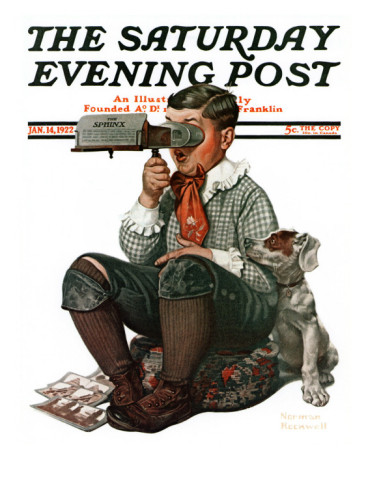

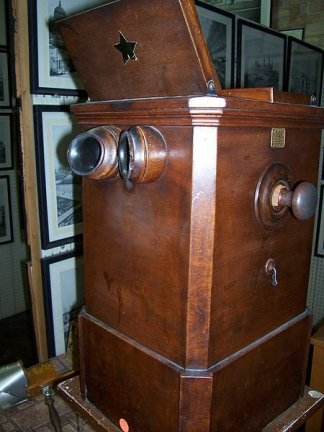
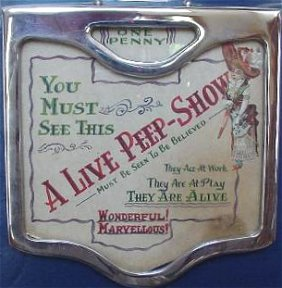
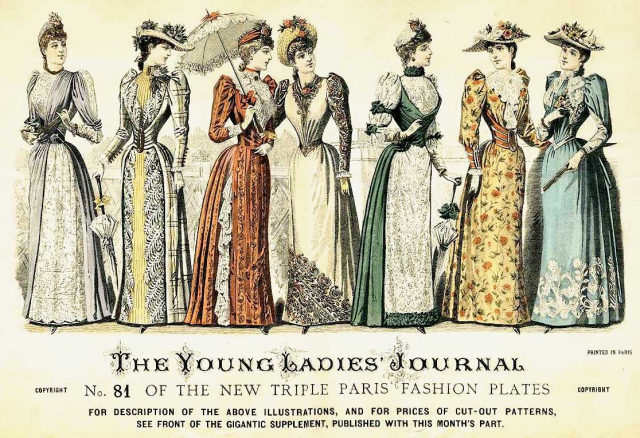


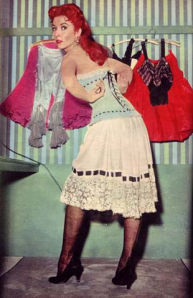
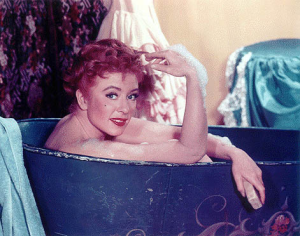






Pingback: Are You Prepared for … the Unthinkable? Part 15: Double Trouble | Currently StaRRing …